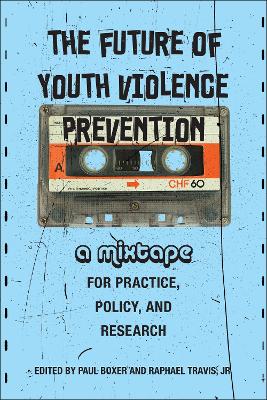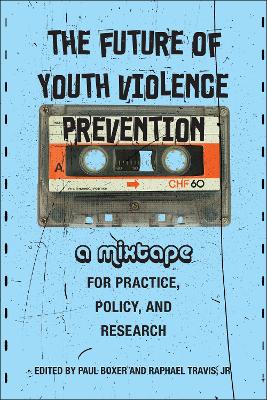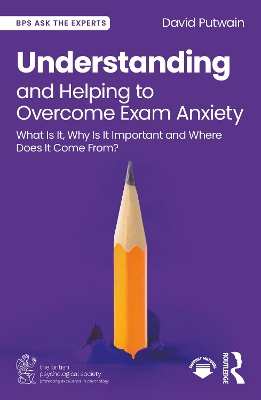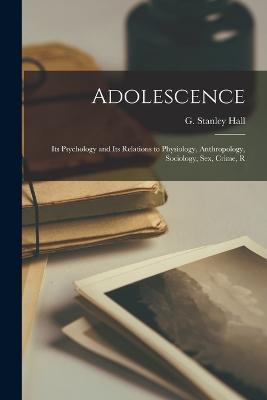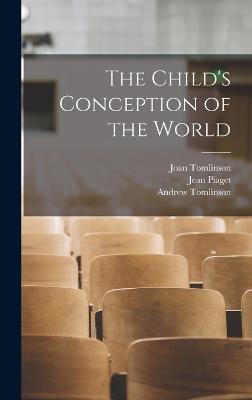Psychological Assessment of Emotional Dysregulation in Children and Adolescents
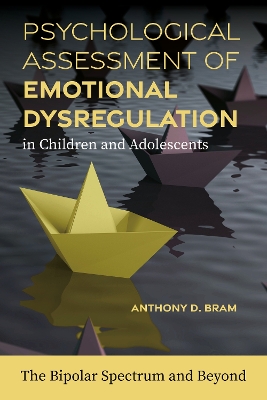 portes grátis
portes grátis
Psychological Assessment of Emotional Dysregulation in Children and Adolescents
The Bipolar Spectrum and Beyond
Bram, Anthony D.
American Psychological Association
12/2024
283
Mole
9781433843259
Pré-lançamento - envio 15 a 20 dias após a sua edição
Descrição não disponível.
Acknowledgments
Introduction: A Way of Thinking About Psychological Assessment of Emotional Regulation and Dysregulation in Children and Adolescents
I. BASIC CONSIDERATIONS
1. Emotional Regulation and Dysregulation in Children and Adolescents: What Are We Assessing?
2. Emotional Dysregulation, the Bipolar Spectrum, and Assessment Considerations With Children and Adolescents
II. EMOTIONAL DYSREGULATION AND THE BIPOLAR SPECTRUM: MULTIMETHOD, DIMENSIONAL, AND DIVERSITY-SENSITIVE ASSESSMENT
3. Basic Rationale for and Principles of Multimethod, Dimensional, and Diversity-Sensitive Assessment
4. Collateral-Report Measures to Assess Emotional Dysregulation
5. Self-Report Measures to Assess Emotional Dysregulation
6. Performance-Based Measures and Methods to Assess Emotional Dysregulation
III. EMOTIONAL DYSREGULATION AND THE BIPOLAR SPECTRUM: DSM-5-TR DIFFERENTIAL AND CO-OCCURRING DIAGNOSES
7. Orienting to Differential Diagnosis Within and Beyond the Bipolar Spectrum
8. Either/Or: Diagnoses Mutually Exclusive With the Bipolar Spectrum
9. And/Or: Conditions to Differentiate From the Bipolar Spectrum or That Co-Occur
10. Conditions More Readily Differentiated From the Bipolar Spectrum But Potentially Co-Occurring
IV. TREATMENT IMPLICATIONS AND OTHER CONSIDERATIONS FOR FOLLOW-UP
11. Treatment Implications: Broad Considerations and Level of Care
12. Treatment Modalities
13. Factors Affecting Therapeutic Engagement and Collaboration
14. Implications for School
15. Additional Considerations for Follow-Up Evaluations and Treatment Adjuncts
V. CASE ILLUSTRATIONS
16. Case 1: Denny
17. Case 2: Stevie
18. Case 3: Jillian
19. Case 4: Nicole
20. Case 5: Pedro
21. Commentary on Cases and Concluding Thoughts
References
Index
About the Author
Introduction: A Way of Thinking About Psychological Assessment of Emotional Regulation and Dysregulation in Children and Adolescents
I. BASIC CONSIDERATIONS
1. Emotional Regulation and Dysregulation in Children and Adolescents: What Are We Assessing?
2. Emotional Dysregulation, the Bipolar Spectrum, and Assessment Considerations With Children and Adolescents
II. EMOTIONAL DYSREGULATION AND THE BIPOLAR SPECTRUM: MULTIMETHOD, DIMENSIONAL, AND DIVERSITY-SENSITIVE ASSESSMENT
3. Basic Rationale for and Principles of Multimethod, Dimensional, and Diversity-Sensitive Assessment
4. Collateral-Report Measures to Assess Emotional Dysregulation
5. Self-Report Measures to Assess Emotional Dysregulation
6. Performance-Based Measures and Methods to Assess Emotional Dysregulation
III. EMOTIONAL DYSREGULATION AND THE BIPOLAR SPECTRUM: DSM-5-TR DIFFERENTIAL AND CO-OCCURRING DIAGNOSES
7. Orienting to Differential Diagnosis Within and Beyond the Bipolar Spectrum
8. Either/Or: Diagnoses Mutually Exclusive With the Bipolar Spectrum
9. And/Or: Conditions to Differentiate From the Bipolar Spectrum or That Co-Occur
10. Conditions More Readily Differentiated From the Bipolar Spectrum But Potentially Co-Occurring
IV. TREATMENT IMPLICATIONS AND OTHER CONSIDERATIONS FOR FOLLOW-UP
11. Treatment Implications: Broad Considerations and Level of Care
12. Treatment Modalities
13. Factors Affecting Therapeutic Engagement and Collaboration
14. Implications for School
15. Additional Considerations for Follow-Up Evaluations and Treatment Adjuncts
V. CASE ILLUSTRATIONS
16. Case 1: Denny
17. Case 2: Stevie
18. Case 3: Jillian
19. Case 4: Nicole
20. Case 5: Pedro
21. Commentary on Cases and Concluding Thoughts
References
Index
About the Author
Este título pertence ao(s) assunto(s) indicados(s). Para ver outros títulos clique no assunto desejado.
psychological assessment; emotional regulation; children; adolescents; measures; treatment implications; emotion dysregulation; bipolar spectrum disorders; multimethod assessment; collateral-report measures; self-report measures; performance-based measures; DSM-5; differential diagnosis; co-occurring disorders; treatment modalities; therapeutic relationship; disruptive mood dysregulation disorder; dysregulation-prone child; treatment-centered diagnosis; emotionally dysregulated child; neurological asseessment; neuropsychological assessment; collateral report methods; irritability; angry outbursts; multimethod assessment of emotion dysregulation; adhd; ptsd; trauma; disruptive behavior disorders; reactive attachment; obsessive-compulsive disorder; individual education plans; 504 plans; eating disorders; dimensional narrative perspectives; idiographic narrative perspectives; child assessment; child assessment considerations; adolescent assessment; comprehensive psychological assessment; alcohol abuse; substance
Acknowledgments
Introduction: A Way of Thinking About Psychological Assessment of Emotional Regulation and Dysregulation in Children and Adolescents
I. BASIC CONSIDERATIONS
1. Emotional Regulation and Dysregulation in Children and Adolescents: What Are We Assessing?
2. Emotional Dysregulation, the Bipolar Spectrum, and Assessment Considerations With Children and Adolescents
II. EMOTIONAL DYSREGULATION AND THE BIPOLAR SPECTRUM: MULTIMETHOD, DIMENSIONAL, AND DIVERSITY-SENSITIVE ASSESSMENT
3. Basic Rationale for and Principles of Multimethod, Dimensional, and Diversity-Sensitive Assessment
4. Collateral-Report Measures to Assess Emotional Dysregulation
5. Self-Report Measures to Assess Emotional Dysregulation
6. Performance-Based Measures and Methods to Assess Emotional Dysregulation
III. EMOTIONAL DYSREGULATION AND THE BIPOLAR SPECTRUM: DSM-5-TR DIFFERENTIAL AND CO-OCCURRING DIAGNOSES
7. Orienting to Differential Diagnosis Within and Beyond the Bipolar Spectrum
8. Either/Or: Diagnoses Mutually Exclusive With the Bipolar Spectrum
9. And/Or: Conditions to Differentiate From the Bipolar Spectrum or That Co-Occur
10. Conditions More Readily Differentiated From the Bipolar Spectrum But Potentially Co-Occurring
IV. TREATMENT IMPLICATIONS AND OTHER CONSIDERATIONS FOR FOLLOW-UP
11. Treatment Implications: Broad Considerations and Level of Care
12. Treatment Modalities
13. Factors Affecting Therapeutic Engagement and Collaboration
14. Implications for School
15. Additional Considerations for Follow-Up Evaluations and Treatment Adjuncts
V. CASE ILLUSTRATIONS
16. Case 1: Denny
17. Case 2: Stevie
18. Case 3: Jillian
19. Case 4: Nicole
20. Case 5: Pedro
21. Commentary on Cases and Concluding Thoughts
References
Index
About the Author
Introduction: A Way of Thinking About Psychological Assessment of Emotional Regulation and Dysregulation in Children and Adolescents
I. BASIC CONSIDERATIONS
1. Emotional Regulation and Dysregulation in Children and Adolescents: What Are We Assessing?
2. Emotional Dysregulation, the Bipolar Spectrum, and Assessment Considerations With Children and Adolescents
II. EMOTIONAL DYSREGULATION AND THE BIPOLAR SPECTRUM: MULTIMETHOD, DIMENSIONAL, AND DIVERSITY-SENSITIVE ASSESSMENT
3. Basic Rationale for and Principles of Multimethod, Dimensional, and Diversity-Sensitive Assessment
4. Collateral-Report Measures to Assess Emotional Dysregulation
5. Self-Report Measures to Assess Emotional Dysregulation
6. Performance-Based Measures and Methods to Assess Emotional Dysregulation
III. EMOTIONAL DYSREGULATION AND THE BIPOLAR SPECTRUM: DSM-5-TR DIFFERENTIAL AND CO-OCCURRING DIAGNOSES
7. Orienting to Differential Diagnosis Within and Beyond the Bipolar Spectrum
8. Either/Or: Diagnoses Mutually Exclusive With the Bipolar Spectrum
9. And/Or: Conditions to Differentiate From the Bipolar Spectrum or That Co-Occur
10. Conditions More Readily Differentiated From the Bipolar Spectrum But Potentially Co-Occurring
IV. TREATMENT IMPLICATIONS AND OTHER CONSIDERATIONS FOR FOLLOW-UP
11. Treatment Implications: Broad Considerations and Level of Care
12. Treatment Modalities
13. Factors Affecting Therapeutic Engagement and Collaboration
14. Implications for School
15. Additional Considerations for Follow-Up Evaluations and Treatment Adjuncts
V. CASE ILLUSTRATIONS
16. Case 1: Denny
17. Case 2: Stevie
18. Case 3: Jillian
19. Case 4: Nicole
20. Case 5: Pedro
21. Commentary on Cases and Concluding Thoughts
References
Index
About the Author
Este título pertence ao(s) assunto(s) indicados(s). Para ver outros títulos clique no assunto desejado.
psychological assessment; emotional regulation; children; adolescents; measures; treatment implications; emotion dysregulation; bipolar spectrum disorders; multimethod assessment; collateral-report measures; self-report measures; performance-based measures; DSM-5; differential diagnosis; co-occurring disorders; treatment modalities; therapeutic relationship; disruptive mood dysregulation disorder; dysregulation-prone child; treatment-centered diagnosis; emotionally dysregulated child; neurological asseessment; neuropsychological assessment; collateral report methods; irritability; angry outbursts; multimethod assessment of emotion dysregulation; adhd; ptsd; trauma; disruptive behavior disorders; reactive attachment; obsessive-compulsive disorder; individual education plans; 504 plans; eating disorders; dimensional narrative perspectives; idiographic narrative perspectives; child assessment; child assessment considerations; adolescent assessment; comprehensive psychological assessment; alcohol abuse; substance

